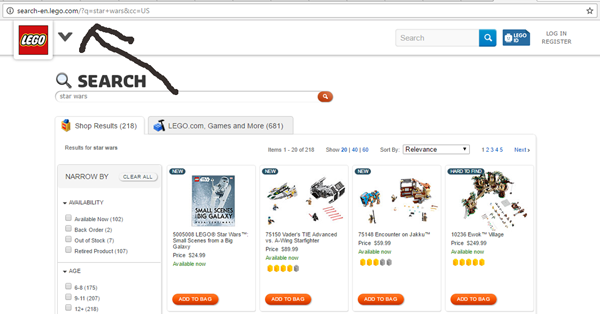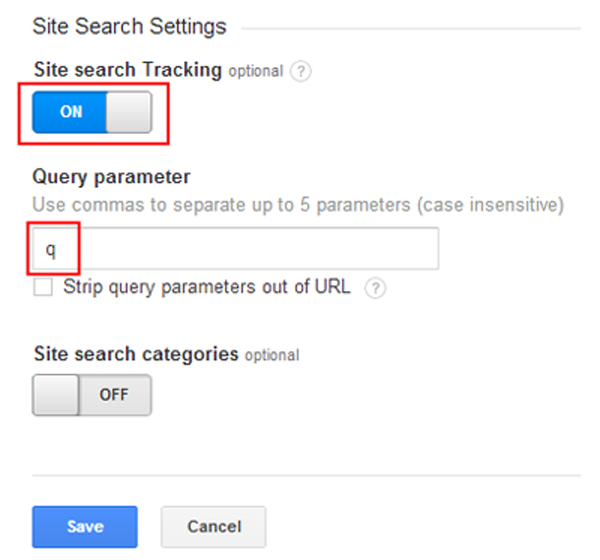Making Your Website Hum Using On-Site Search Analytics

If you ask online marketers how many use a system like Google Analytics for their site, there will be a room full of raised hands. Follow up with a question about how many have enabled on-site search tracking, however, and those raised hands will likely collapse.
On-site search data is rich, potentially transformative data that is free. It's also data that very few marketers take advantage of.
The reasons for not enabling on-site search tracking and using the data to improve website engagement and conversions usually fall into these buckets:
- It's not enabled by default for Web analytics tools, and it's too difficult for Web analysts to turn on without the help of a developer.
- The analysts in the team do not understand how to use the data from on-site search.
- The data businesses can get from on-site search seems to be vanity data, in that the information is not "actionable."
In reality, however, most analysts who have used on-site search data will be able to say that the information is easy to collect and useful:
- It will take a Web analyst with no significant development skills less than an hour to turn the feature on - for good.
- The data is actually pretty easy to understand on a tool like Google Analytics; it's only complicated if marketers use logs to derive the data.
- Web professionals can use the data in practical ways to improve their website.
Taking a Few Minutes to Enable On-Site Search Tracking
So how does one enable on-site search tracking? While the actual setup procedure will vary based on the solution being used, let's take a look at how this can be done on one of the most popular analytics solutions, Google Analytics.
Say a person manages lego.com and a visitor conducts a search for "star wars." The URL of the site will look like this:
+ https://search-en.lego.com/?q=star+wars&cc=US
The important part to note is the ?q=star+wars bit. That tells us that the search is "star wars," and that the identifier for the search is "q."

Now that the person knows the search identifier is "q," he or she can go to the Google Analytics interface. First, selecting Admin, and then choosing View Settings from the third column. From there, "Site Search Tracking" should be turned ON, and then the parameter the engine uses, in this case, "q" can be inserted.

Once the user saves their changes, they're done. It can take Google Analytics 24 hours to get the site search data, though.
Using Site Search Data to Reduce Company Jargon
Once the on-site search tracking is enabled, brands can slice and dice the search data in interesting ways. Before they get too deep, however, it's important to note one thing about site search: It's visitor intent data stated in the user's own words.
That introduces a lot of possibilities - but one of the most important is that it can show companies a stark contrast between what it calls things, and what users actually call things. To do this, marketers can extract the terms, and then compare their navigation elements and product categories with the terms visitors use.
The results might be surprising; companies might find that their category terms are not in the top 50 terms, but a similar term that they didn't pay attention to is in the top 20. That can give brands critical insights into how they can get rid of company jargon and use the terms that their visitors actually use.
Using Data to Find Elements to Feature
The products and categories organizations typically feature include the most profitable products, what the boss wants to feature, most viewed items, etc. Is that the right approach?
Marketers can examine click-through rates to see if those products are working, but they normally wouldn't have any idea about those specific items and categories that people wish they could find on the pages. On-site search data changes that.
After brands extract the searches, they must look for and identify patterns:
- What are the product searches seen most frequently?
- Are these products being featured prominently enough on the right pages?
When enterprises can look at the data to see what people are actively looking for, they can generate ideas about how to change the site and the resulting digital experience. Businesses can feature the products and services people actively search for more prominently (e.g., they can split test navigation elements that more closely match what people are searching for and interested in).
Using On-Site Search Data to Fix ... On-Site Search
Look, nobody expects an internal search engine on a website to be as good as Google, but there is a real incentive to getting site search right.
Now, most internal search engines are horrible before someone improves them. Without site search data, however, marketers just would not know how much.
With site search data, though, they'd be able to change a range of things:
- If brands can see which searches have the highest exit rates, they can see if things are tagged properly to get results to display for those searches.
- For the top searches on a site, marketers can set up featured results to lower the exit rates.
Putting It All Together
On-site search data is powerful, and relatively easy to acquire. Companies need to follow specific steps to get the data, and they need to know how their marketers can process that information to make it useful for the site (and the business). Once they do, though, brands will have intent data directly from their visitors, in their own words - data that no one can afford to ignore.









